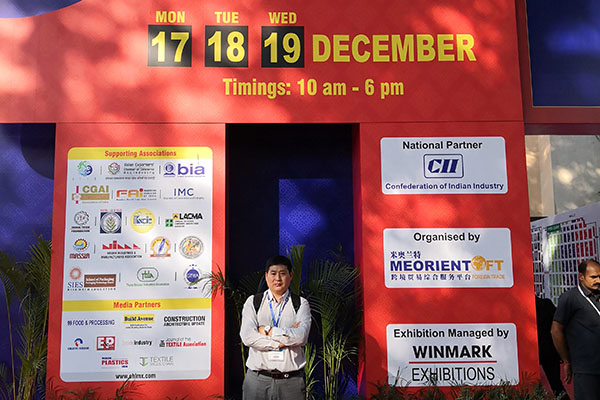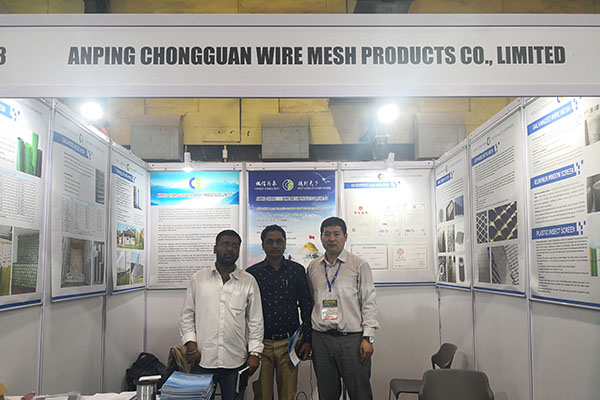China-India Homelife Exhibition In Mumbai
As a big potential country, India’s manufacturing industry occupies an important psychological position in the world, and the key areas represented by the mining and steel industry have attracted attention. In view of the relatively low per capita steel consumption, the acceleration of infrastructure construction, and the vigorous development of automobile, railway and other industries, India’s steel industry presents a huge growth space. Today, India has become one of the most potential steel industry centers in the world. As a big potential country, India’s manufacturing industry occupies an important psychological position in the world, and the key areas represented by the mining and steel industry have attracted attention. In view of the relatively low per capita steel consumption, the acceleration of infrastructure construction, and the vigorous development of automobile, railway and other industries, India’s steel industry presents a huge growth space. Today, India has become one of the most potential steel industry centers in the world.
Another steel center in the world
As demand continues to rise, large public and private enterprises in India have increased steel production capacity. From 2012 to 2017, the output of finished steel in India increased at a compound annual growth rate of 8.39%. In 2017, India became the second largest producer of crude steel in the world.
India will provide $20billion in investment opportunities in the rapidly growing steel and non-ferrous industries in the next three years. India’s new plan for steel production is announced to target 110 million tons by 2020. India will be the world’s second largest steel producer and the fourth largest consumer market for steel and non-ferrous metals in the world.
1. a large number of infrastructure to be built promotes strong demand in the steel market
Since the beginning of 2000, the Indian steel sector has benefited from rising prices and production. In 2017, the total steel consumption in India reached 83.9 million tons. Growth in India’s domestic market will support demand, and growth in infrastructure, oil, gas and automotive industries will drive the steel market. It is expected that by 2031, India’s steel production will double and its growth rate will exceed 10% in 2018.
India’s infrastructure sector accounts for 9 per cent of steel consumption and is expected to increase to 11 per cent by 2025. Huge infrastructure investment will drive demand for steel products in the coming years. These infrastructure include airports, railways, oil and gas pipelines, power infrastructure and rural construction.
2. the domestic steel manufacturing industry in India develops rapidly
By 2017, India became the world’s second largest producer of crude steel (ranked 8th in 2003), with cheap labor and abundant iron ore reserves, making India establish a competitive influence around the world. India’s crude steel production has grown at a compound annual growth rate of 5.49% in the past six years.
The capacity utilization of steel producers will increase with strong export demand and signs of recovery in domestic sales. JSW steel, Essar steel and other enterprises have experienced a sharp growth in steel manufacturing in the past two months.
It is expected that India’s steel manufacturing industry will increase to 128.6 million tons by 2021, raising the country’s share of global steel production from 5.4 per cent in 2017 to 7.7 per cent in 2021. From 2017 to 2021, India’s steel production will increase at a CAGR of 8.9%, and India is expected to become the largest steel producer in the world.
3. both domestic investment and overseas direct investment have increased
India needs to reinvest to achieve the goal of 300 million tons of steel production capacity in 2030. The Ministry of iron and steel plans to set up a steel research and Technology Agency in India to promote R & D activities in the steel industry. India’s steel industry allows 100% of foreign direct investment, opening the door to the industry.
India’s auto production is expanding, with an annual compound growth rate of 8.76%. The increase in the capacity of the auto industry will have stronger demand for steel. According to the output evaluation, India has become the third largest automobile market in the world in 2016. It is expected that by 2021, the capital goods and durable consumer goods industry in India will grow by 7.5-8.8%, resulting in greater steel demand.
The increase of domestic and foreign capital investment and the signing of more and more memorandums will promote investment in Indian steel industry. Currently, the confirmed overseas investment in iron and steel industry is nearly $40billion.
4. support for various relevant policies to help the industry grow
India’s steel industry can make 100 per cent use of foreign direct investment, and the government is working on industrial R & D activities, tariff reduction and other preferential measures.
The new national steel policy was set by the Ministry of iron and steel in 2016, and its objectives still include the main objectives of the 2005 national steel policy (NSP). The new policy aims to boost India’s demand for steel and raw materials. Under this policy, all government bidding will give priority to domestic steel products. In addition, Indian steel manufacturers importing intermediate products or raw materials shall increase the price by at least 15% on the profit of domestic purchase terms.
In 2017, India’s new steel policy is eager to reach 300 million tons of steel-making capacity by 2030, that is, an additional investment of US $156.68 billion in the steel industry from 2030 to 2031.
India’s mining and iron and steel industries are divided into two parts: the main manufacturing industry and the secondary processing industry. The main production department includes some large-scale comprehensive steel suppliers, which produce billet, steel bar, wire rod, structural steel, railing, thick steel plate, hot rail coil steel and sheet metal, etc. The small part of secondary processing industry is concentrated on deep processing products, such as cold rolling, galvanized coil, angle steel and column iron, and other repeated cold rail products and sponge iron castings. These two parts cater to different segments.
Post time: Jun-24-2021


